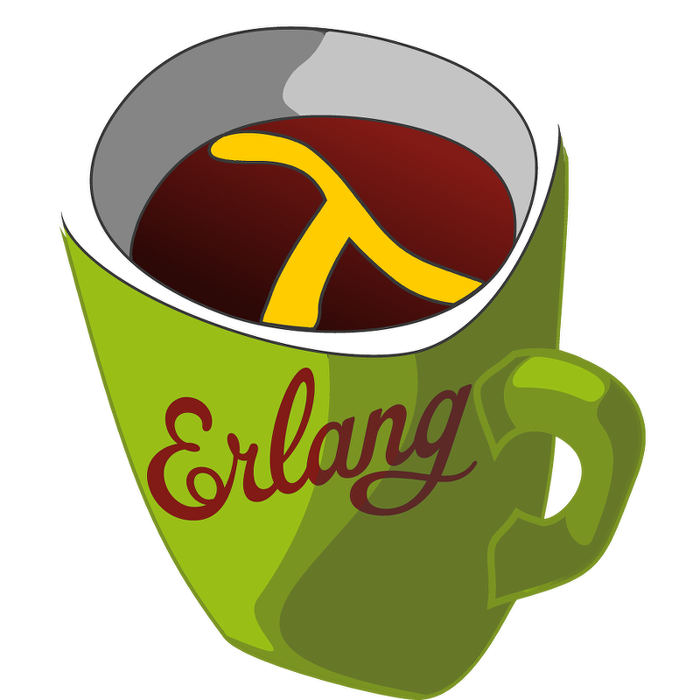LFE Friday - ETS Introduction, part 3: ETS Table Types
 This week's LFE Friday was translated with permission from the
Erlang Thursday
series by Steven Proctor.
This week's translator: Robert Virding.
This week's LFE Friday was translated with permission from the
Erlang Thursday
series by Steven Proctor.
This week's translator: Robert Virding.
Today's LFE Friday continues the introduction to ETS and takes a look at the different types of storage strategies that ETS supports.
The different types that ETS supports are: set, ordered_set, bag, and duplicate bag.
Each of these different types can be passed in when creating a new ETS table, but let's see what type of ETS table we get when we don't specify any of the types.
> (set ets-empty (ets:new 'ets-empty ()))
8207
> (ets:info ets-empty)
(#(read_concurrency false)
#(write_concurrency false)
#(compressed false)
#(memory 305)
#(owner <0.28.0>)
#(heir none)
#(name ets-empty)
#(size 0)
#(node nonode@nohost)
#(named_table false)
#(type set)
#(keypos 1)
#(protection protected))If we look above, we can see the type tagged tuple has the type of set. We also see that the keypos tagged tuple has the value 1 which tells us that it is the first element of the tuples which are the key.
To see how the different types can work we will create three tuples to add to the ETS tables of the different type to see what they store.
> (set item-1 #(1 a))
#(1 a)
> (set item-2 #(1.0 "a"))
#(1.0 "a")
> (set item-3 #(1 "one"))
#(1 "one")We will have a two tuples with the first element, the key, of 1, and one tuple whose first element is 1.0 to see how the different types of ETS tables behave when given the "same" key.
Why have key of both 1 and 1.0? Because depending on the comparison of equality used, they may or may not be seen as the same, and therefore the same key.
> (== 1 1.0)
true
> (=:= 1 1.0)
falseFirst we will take a look at an ETS table of type set.
> (set ets-set (ets:new 'ets-set '(set)))
12304We insert item-1 followed by an insert of item-2, and use ets:tab2list/1 to see what is stored in the ETS table.
> (ets:insert ets-set item-1)
true
> (ets:insert ets-set item-2)
true
> (ets:tab2list ets-set)
(#(1 a) #(1.0 "a"))An ETS table of type set sees 1 and 1.0 as different keys. So now let's add item-3 and see what happens when we do an insert with an already existing key.
> (ets:insert ets-set item-3)
true
> (ets:tab2list ets-set)
(#(1 "one") #(1.0 "a"))The previous tuple with the key of 1 was replaced by the tuple for item-3 which is the last thing we inserted.
Let's look at what an ordered_set does.
> (set ets-ordset (ets:new 'ets-ordset '(ordered_set)))
16401Again we'll insert item-1 followed by item-2 and use ets:tab2list/1` to check it's state.
> (ets:insert ets-ordset item-1)
true
> (ets:insert ets-ordset item-2)
true
> (ets:tab2list ets-ordset)
(#(1.0 "a"))In this case, the key of 1.0 was seen the same as the previous 1 that was in there, so it overwrites the first item inserted.
We insert item-3 to the ordered_set, and we can see it gets replaced yet again.
> (ets:insert ets-ordset item-3)
true
> (ets:tab2list ets-ordset)
(#(1 "one"))Now lets check an ETS table that is a bag.
> (set ets-bag (ets:new 'ets-bag '(bag)))
20498And we yet again add item-1 and item-2 to the table.
> (ets:insert ets-bag item-1)
true
> (ets:insert ets-bag item-2)
true
> (ets:tab2list ets-bag)
(#(1 a) #(1.0 "a"))Looking at ets:tab2list/1, we can see that for a bag they are treated as two different items.
And again we will see what happens when we insert item-3 into this ETS table.
> (ets:insert ets-bag item-3)
true
> (ets:tab2list ets-bag)
(#(1 a) #(1 "one") #(1.0 "a"))In the case of a bag type of ETS table, we have item-2 along with entries item-1 and item-3 even though item-1 and item-3 both have the same key.
The last type of ETS table we have is a duplicate_bag.
> (set ets-dupbag (ets:new 'ets-dupbag '(duplicate_bag)))
24595We insert item-1 followed by item-2 as we did with all of the other types of ETS tables.
> (ets:insert ets-dupbag item-1)
true
> (ets:insert ets-dupbag item-2)
true
> (ets:tab2list ets-dupbag)
(#(1 a) #(1.0 "a"))And like all of the other ETS table types, we insert item-3 into the duplicate_bag ETS table type.
> (ets:insert ets-dupbag item-3)
true
> (ets:tab2list ets-dupbag)
(#(1 a) #(1 "one") #(1.0 "a"))And we see we have all three items in the ETS table for a duplicate_bag type.
If we look at the behavior of bag and duplicate_bag though, we see that the behavior of both seems to be the same.
So what is the difference between the two???
If you dig into the documentation, and look at the description of the types under ets:new/2, it says that a bag will allow duplicate keys, but allow the item to only be added once, a duplicate_bag will allow multiple entries even if they have the same values as well.
To see this in action, we will add item-1 to both the ets-bag table and the ets-dupbag table and see what happens.
First with just the ETS bag type.
> (ets:insert ets-bag item-1)
true
> (ets:tab2list ets-bag)
(#(1 a) #(1 "one") #(1.0 "a"))The return value is the same as it was before, so adding an item that is already in a ETS table of type bag will not add it again.
So what does the duplicate_bag type of ETS table do?
> (ets:insert ets-dupbag item-1)
true
> (ets:tab2list ets-dupbag)
(#(1 a) #(1 "one") #(1 a) #(1.0 "a"))And we can see the tuple #(1 a) shows up twice, because we called ets:insert/2 with that value twice.
- Proctor, Robert
